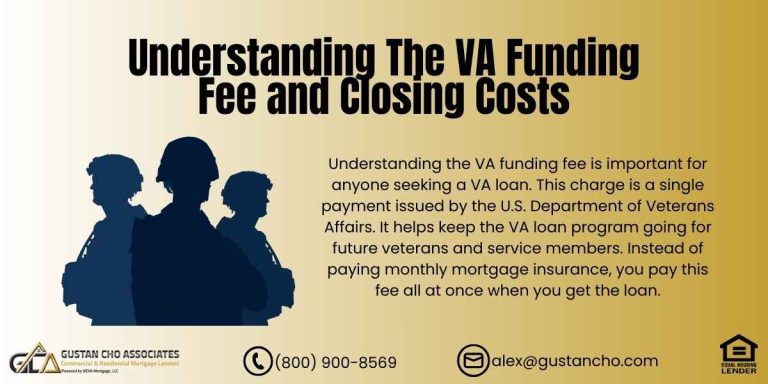In this blog, we will discuss and cover the warehouse line of credit used by mortgage bankers and correspondent lenders. Understanding How Warehouse Line Of Credit Works In The Mortgage Process is important in understanding the overall mortgage loan process. Both mortgage bankers and mortgage brokers are licensed professionals.
Licensing Requirements of Mortgage Brokers Versus Mortgage Bankers
Loan officers who work at mortgage banking companies and mortgage broker companies need exactly the same licensing requirements. Mortgage bankers and mortgage brokers are both mortgage loan originators. Both of their main role in business is to originate loans.
The only difference between mortgage bankers versus mortgage brokers is mortgage bankers use their own company names to close on their loans and fund the loans they close.
They fund the loans they close by using their warehouse line of credit. All mortgage bankers have to have a line of credit through a bank and/or a larger mortgage banking firm.
The Main Difference Between Mortgage Bankers And Mortgage Brokers
The difference between mortgage bankers versus mortgage brokers is mortgage bankers close loans under their names and fund the loans with their own money. All mortgage bankers have a warehouse line of credit. When mortgage bankers need to close a loan, they will tap into their warehouse line for funding.
How Does The Post Mortgage Process Work After Funding of the Closed Loan
Once the loan is funded, the loan is then sold on the secondary mortgage market. Fannie Mae and Freddie Mac are the two mortgage giants and the largest buyers of mortgages in the secondary mortgage market. The role of Fannie Mae and Freddie Mac is to provide liquidity in the mortgage markets.
Want to Grow Your Mortgage Bank Without Tapping All Your Cash?
Learn how a warehouse line of credit used by mortgage bankers can fund more closings
How Does Fannie Mae and Freddie Mac Provide Liquidity To Lenders?
Fannie/Freddie provides liquidity in the mortgage markets by being the two largest buyers of mortgages in the country. By purchasing mortgages on the secondary mortgage markets, lenders can sell the loans they fund. Individual lenders pay down their warehouse lines so there is room to originate and fund more loans. Lenders reuse their warehouse lines after they sell the loans they funded to make more loans. Due to Fannie Mae and Freddie Mac, mortgage borrowers can easily qualify for home loans at low competitive rates. However, most mortgage bankers will sell the loans they fund to a wholesale lender they have correspondent lending relationships with.
Warehouse Line of Credit: Selling Funded Loans on The Secondary Mortgage Market
Mortgage bankers want to sell the closed loans they funded as soon as possible. The time clock is on in selling the loan on the secondary mortgage market. Most smaller mortgage bankers will sell the loans they fund to the wholesale lender with who they have a corresponding lending relationship.
Warehouse lines are short-term finance loans to carry the mortgage banker from the time they fund the loan and the time they sell the loan on the secondary market.
Mortgage bankers need to make sure and careful all the loans they approve and fund meets agency mortgage guidelines. The secondary mortgage market can purchase loans but can kick them back to the mortgage banker if the loan is bad. There are cases where borrowers have quit their jobs after closing and the buyer of the loan on the secondary market considered it as a bad loan. Mortgage bankers do not want to keep the loan in-house. Most mortgage bankers will sell bad loans as scratch and dent loans at a discount. They will lose money on a scratch and dent sale.
Buyers of Loans on The Secondary Mortgage Market

How Mortgage Bankers Can Repeat Originating and Funding Loans on the Secondary Market
With the proceeds from the wholesale lender, the mortgage banker will pay down the warehouse line of credit and will originate and fund more loans. This process keeps on repeating. This is how mortgage bankers make money. The warehouse line is a temporary bridge between the timeframe mortgage bankers fund loans and the time the wholesale lender buys the loan.
The wholesale lender who buys the loan normally retains the servicing rights of the loan. The wholesale lender will package these loans they purchase and bundle them up as mortgage-backed securities (MBS).
The wholesale lender will then sell them to larger financial institutions, large banks, insurance companies, or even directly to Fannie Mae or Freddie Mac. In this article, we will discuss and cover the warehouse line of credit used by mortgage bankers.
Understanding The Loan Process of Mortgage Brokers
Mortgage brokers originate and process their borrowers. Mortgage brokers have lending relationships with wholesale lenders. Wholesale lenders have their own in-house mortgage underwriters that underwrite files submitted by mortgage brokers. Wholesale lenders work closely with mortgage brokers in closing the loans mortgage brokers originate and process.
Borrowers of mortgage brokers close loans using the name of the wholesale lender. The wholesale lender funds the loan of the mortgage broker. Mortgage brokers do not have any liability if the loans that close go bad.
However, if the borrower of the loan that closed refinances or sells the house and the loan is paid off before six months, they can get a recapture. A recapture is when the mortgage broker needs to give the wholesale lender the commissions they earned back.
Closing Loans With Your Own Cash? That’s Slowing You Down
See how a warehouse line of credit used by mortgage bankers can multiply your capacity
Understanding How Warehouse Line of Credit Is Used and Paid in The Mortgage Process
Mortgage bankers are also referred to as correspondent lenders or mini-correspondent lenders. Mortgage bankers originate, process, underwrites, and fund the loans they close. Mortgage bankers close loans using their names. All mortgage bankers have warehouse lines of credit issued by a financial institution such as an FDIC bank. Warehouse lines are not meant for mortgage bankers to use to fund loans permanently. The providers of warehouse lines of credit are financial institutions such as FDIC banks.
How Mortgage Bankers Use Their Warehouse Line of Credit To Fund Loans
Mortgage bankers use warehouse lines as a short-term bridge loan from the time the loan funds until the investor in the secondary mortgage market buys the loan. With the proceeds, the mortgage banker will repay the financial institution that issued them the credit line. When the loan is purchased, this is when mortgage bankers make their profit as well.
Who Issues Warehouse Line of Credit To Mortgage Bankers
Financial institutions that issue warehouse lines of credit to mortgage bankers make money when the mortgage banker uses the line to fund the loan. The mortgage banker needs to pay the warehouse line back as soon as possible to maximize their profit.
The longer the warehouse line is used and does not get paid back, the more interest is paid and the less profit the mortgage banker makes.
Without the use of warehouse lines of credit and mortgage loan buyers on the secondary market, mortgage bankers would have a liquidity problem and could not keep on originating more loans.
What Happens After Mortgage Bankers Sell The Loan To The Investor Of The Secondary Market
Mortgage bankers sell loans they find to a larger mortgage banker (normally the wholesale lending partner the mortgage banker has a delegated or non-delegated underwriting relationship). The larger mortgage banker who buys the loan retains the servicing rights of the loan and is normally the mortgage servicer.
The mortgage servicer sends out mortgage statements and collects payments from borrowers. The larger mortgage banker that bought the loan normally will package up all the loans by a bunch of smaller mortgage bankers.
After packaging the loans, the larger mortgage banker will resell them one more time to a large aggregator on the secondary mortgage market such as Fannie Mae and Freddie Mac. Warehouse line of credit is paid after the closed loans are sold. Using warehouse lines of credit enables mortgage bankers not to use their own personal capital to fund loans.
Turn Your Pipeline Into a True Mortgage Banking Platform
Let Gustan Cho Associates guide you on leveraging a warehouse line of credit used by mortgage bankers the right way








